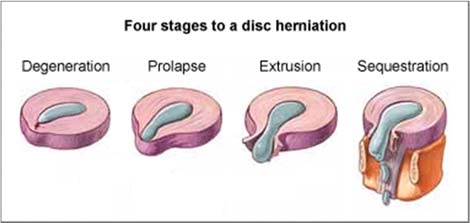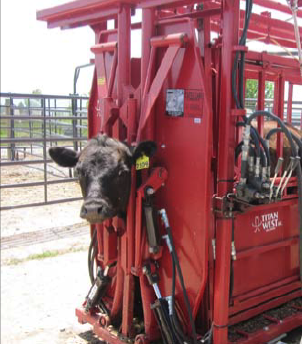Preventing Back Injury While Working in Agriculture
Nearly 80% of Americans experience back pain at some point. It is second only to the common cold as a source of lost work time, and is the most common cause of disability in people under age 45.1 In an occupation as physically demanding as agriculture, protecting your back is one of the most important factors for staying productive on the farm. Although no there is no replacement for a healthy back, there are devices and equipment that can replace the need to do repetitive manual lifting that often causes back injuries.
Sources of Back Pain
Many work tasks in agriculture require strong core muscles, especially in the lower back. Handling livestock, prolonged sitting to operate equipment, repetitive lifting, lifting objects overhead, and lifting heavy objects on uneven terrain can all result in short-term or chronic back pain and injury. Physical conditions – including age, body weight, and disease – can also contribute to poor back health.2
Back injuries resulting from these situations and conditions come in different forms.3 The most common include:
- Sprains or Strains: Sprains occur when the ligaments (tissues that attach bones at a joint) become stretched or torn. Falling, twisting, or being hit can cause a sprain. Strains occur when muscles or tendons (tissues that connect muscle to bone) become stretched or torn. Twisting or pulling can cause a strain. Strains may occur suddenly or may develop over time.
- Herniated Disks: Herniations occur when the disks (cushions between the bones of the back) bulge or rupture (Figure 1). This reduces the cushioning between the bones and irritates nearby nerves causing sharp pain, numbness, or tingling. Symptoms may be felt in the back or running into the leg. Herniations can be caused by injury, but disks also break down with age, making them more susceptible to herniations.

- Fractured Vertebrae: Vertebrae (the bones of the back) can be fractured or broken just like any bones in the body. Fractures can be caused by falls, blows to the spine, or compression of the back.
- Chronic Conditions: Health conditions such as arthritis, spondylolisthesis (vertebral defect), or spinal stenosis (narrowing of the spinal canal) can all cause or contribute to back pain.
Preventing Back Injury
Protecting the back when completing work tasks is the best strategy for maintaining back health. Many types of injuries and conditions develop over time so establishing good habits early will help preserve back health. For those who have been injured or experience chronic back pain, modifying work practices can reduce the risk for additional injury.4-6 Use the following practices to manage activities that are most likely to lead to back strain and injury:
Lifting or Carrying Objects:
- Use help when lifting heavy objects and lighten loads, particularly if lifting things that are oddly shaped or may shift.
- Know where you will be placing the object and have a clear path before you lift it.
- Bend at the knees not at the back, and turn to face the object rather than twisting while lifting.
- Carry items close to the body.
- Use hydraulics and pneumatics (e.g., hoists) to lift heavy items whenever possible.
- Use equipment to move items long distances (e.g., UTVs, skid-steer loaders, forklifts).
- Use back braces and supporting devices.

Working with Livestock:
Don’t take unnecessary risks when working with livestock. Protect yourself from contact with large animals whenever possible.
- Use animal handling equipment that restricts animal movement and positions animals at a proper working height when medicating, branding, trimming hooves, etc.
- Have assistance and use animal handling/ safety equipment that reduces your exposure to direct animal contact including squeeze chutes, handling pens, and small animal transportation devices.
Use automated equipment that minimizes the operational force needed such as automatic squeeze chutes (Figure 2) when working with livestock. Use feeding equipment and bale handlers for handling feed and hay.
Operating Farm Equipment:
Spending long hours seated while experiencing jolts and vibrations from equipment puts a lot of strain on the lower back. To reduce the impact:

Source
- Position the seat to easily reach the controls.
- Use seating that provides adequate support (e.g., cushioning, suspensions, arm rests).
- Monitor towed implements by using mirrors or camera systems rather than twisting to look behind. Swivel seating can also eliminate the need to twist the back.
- Use automatic gate openers and quick hitches to reduce the number of times you need to exit the tractor.
- Step down from vehicles or equipment rather than jumping off. Add additional tractor steps if needed (Figure 3). Stepping down prevents jarring to lower back and reduces the likelihood of falling.
Completing Maintenance/Shop Tasks:
When possible, position workstations/equipment at the proper height to minimize bending and stooping.
- Store frequently used parts and tools between waist and shoulder height to make them easier to access.
- Place anti-fatigue mats in areas where you stand for long periods of time.
- Use a stool when working close to the ground.
Maintaining Back Health
Routine activities that protect and strengthen the back can better prepare you for handling physically demanding work. Try the following:
- Strengthen the core muscles of your body through regular exercise.
- Follow a daily stretching program to maintain flexibility.
- Practice proper posture, especially when seated.
- Sleep on your back with a supportive mattress and pillows to maintain proper spine alignment. Stomach and side sleeping can misalign the spine and cause long-term problems.
Conclusion
As an agriculturalist, your back is one of your greatest assets. Take the time to invest in your back by protecting yourself from dangerous work tasks and creating habits that increase your strength and flexibility. If you have chronic back pain, use methods and technology to ease the most difficult chores. Consult with a physical therapist, doctor, or other professional who can suggest safe solutions for your everyday work tasks.
References
- 1 Cleveland Clinic http://my.clevelandclinic.org/health/diseases_conditions/hi c_your_back_and_neck/chronic-back-pain-overview Accessed January 30, 2015.
- 2 WebMD http://www.webmd.com/back-pain/default.htm Accessed February 12, 2015.
- 3 MedlinePlus http://www.nlm.nih.gov/medlineplus/backinjuries.html Accessed March 2, 2015.
- 4 National AgrAbility Project (2014). Back on the Farm, Back in the Saddle: A Guide to Back Health in Agriculture.
- 5 National Farm Medicine Center. Marshfield Clinic. Ergonomics of Back Pain in Farmers – Descriptive Reference Manual: A Clinician’s Guide for the Prevention and Treatment of Back Problems and Injury Associated with Midwest Dairy Farming.
- 6 Kirkhorn, S.R., Earle-Richardson, G., & Banks, R.J. (2010). Ergonomic Risks and Musculoskeletal Disorders in Production Agriculture: Recommendations for Effective Research to Practice. Journal of Agromedicine, 15:3, 281- 299.
Authors
Rhonda Miller, Ph.D., and Anne Brown-Reither


